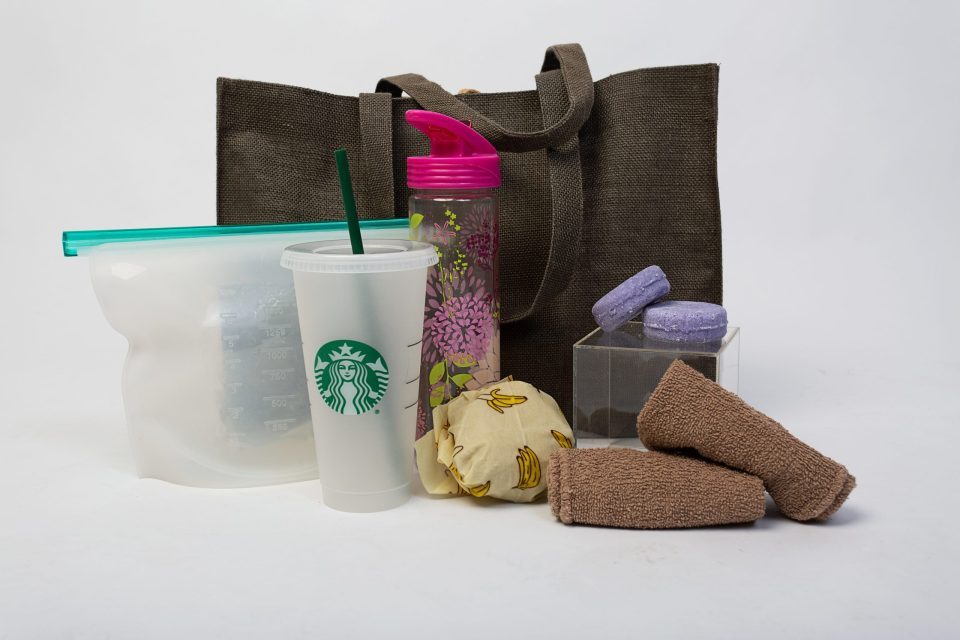We typically accumulate a lot of waste in our daily lives. Many people thing it’s expensive to live a zero waste lifestyle, but it’s actually much cheaper in the long run. Here’s a guide that proves that if a broke college student can afford to work towards living zero waste, so can you.
Zero waste living has been growing in popularity in recent years. More and more people recently have become concerned about the environment and the resources it provides. If you’re interested in trying to live with less waste, you can help save natural resources as well as save some money in the long run.
First, let’s start off with some quick facts:
- Zero waste living means aiming to reduce landfill-bound trash to a minimum. If you’re interested to start, know that you don’t have to live 100% zero-waste; you can easily cut some wasteful items out of your life and keep others that are more difficult to replace.
- In the United States in 2017, about 139.6 million tons of municipal solid waste (MSW) were landfilled. Food was the largest component at about 22%. Plastics accounted for about 19%, and paper and paperboard made up about 13% (According to the EPA).
- Normally, plastic items take 1,000 years to decompose (According to multiple sources including ThoughtCo)
- Every year, an estimated 8 million metric tons of plastic waste enter the ocean on top of the already 150 million metric tons that already circulate marine environments (According to Ocean Conservancy).
Steps to living zero waste:
- Why?: First, establish your “why.” If you don’t have a reason, this lifestyle won’t stick.
- Assess your waste: To change your lifestyle, you have to know what you’re doing right now. Pay attention to what you’re throwing away – keep notes, take pictures, whatever it takes to keep track of your habits.
- Make the tough decisions:Now that you know all of your habits, it’s time to decide which ones you’re going to prioritize changing. It’s so important to start out small and not to overwhelm yourself with big decisions all at once, which leads me to the next step.
- Replace, replace, replace: I hereby give you permission NOT to replace all of your single use items all at once. Instead, make a plan to replace items as they run out. One thing I wanted to do at the start of my (ongoing) zero waste journey was buy one new sustainable product each month. I found this to be very doable with a tight budget, and I’ve saved so much money on products since I started.
My journey:
I started my journey towards a zero-waste lifestyle about a year ago with a single straw. I saw the FinalStraw, a reusable collapsible straw, for sale on Kick Starter and immediately thought it was the greatest invention of the modern age. I now keep this foldable aluminum straw on my keychain and use it every time I need a straw.
I looked at all the waste I accumulate with shampoo bottles. I found Lush shampoo bars, and I haven’t turned back since. They cost about the same (or much less) as a regular bottle of shampoo, and they last about as long.
Next came the kitchen, my biggest culprit of waste. This is an overwhelming place to try to tackle, so I started with a few items at a time. I switched to silicon storage bags instead of plastic ones, cloth beeswax wrap instead of plastic wrap, and cloth kitchen towels instead of rolls of paper towels. All these switches will save a ton of money over time.
Now, on to coffee. First, consider making your coffee at home. If you do make your coffee at home and use a Keurig, consider buying a reusable K-cup that you refill with coffee grounds. This saves a ton of plastic waste and a ton of money. If you do go to a coffee shop, get your drink in a reusable cup. Starbucks sells reusable cups and straws for cold drinks for $3, and they give you a 10% discount when you use it there.
On the subject of drinks, let’s talk about those single use plastic bottles. Every day, 60 million plastic bottles end up in the trash (According to the Container Recycling Institute). In most of the United States, though, the water from the faucet is perfectly okay to drink. Switching to using reusable water bottles is one huge change you can make. If you’re concerned about your tap water, you can get a filtered pitcher to use.
Finally, it’s also important to try to be sustainable when grocery shopping. We all know how annoying those plastic grocery bags are. While these do have some secondary uses, there’s a better way of grocery shopping. You can buy reusable shopping bags and use those for all your shopping. They’re also much more convenient than plastic grocery bags; one reusable shopping bag can hold as much as 5-7 plastic bags (in my experience), and you don’t have to worry about the bags ripping open on your way into the house.
Of course, there are so many more sustainable switches you can make. These are just the things I’ve personally done so far. I am far from living a completely waste-free life, but I feel proud knowing that I am working towards it every day.
Recommended Products:








